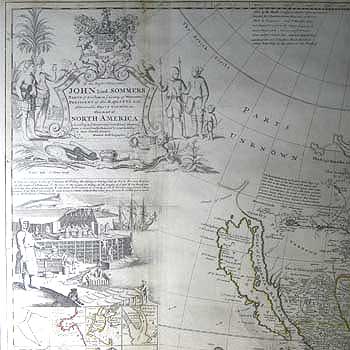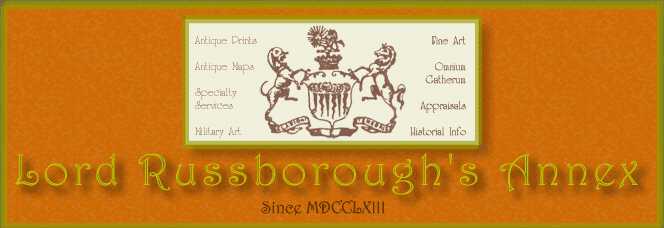Published in Moll, Herman. The world described, or a new and correct sett of maps. [London: J. Bowles, Maps separately published 1709-1720 as a folio in different editions 1715-1754 contemporary hand colouring 1s extra]. Plate 7. 1720
Political posturing was arguably the reason Moll's map of North America was published. It being a response to De l’Isle's influential map Carte de La Louisiane de du Cours du Mississipi of 1718, in which De l’Isle emphasized the French claim to the Carolinas. Moll and the British hoped to counter those claims with the publication of this map, which depicts Newfoundland through the Carolinas under British control and extends British claims to Labrador (New Britain) and the area surrounding Hudson's Bay. Further, Moll reduces France's claim in Louisiana which here extends south of the Ouabach ou de S. Jerome (Ohio) River (with the interesting note "the road usually taken from Carolina to Canada is by this river.") and west to the North River (Rio Bravo del Norte/Rio Grande).
An elaborate title vignette engraved by G. Vertue after a drawing by B. Lens is surmounted by the Sommers Coat of Arms, (Sommers was an English Whig jurist and statesman who is known for his role in the Bill of Rights in 1689). Also depicts an Eskimo family holding spears and bow, with another in a kayak to the rear. To the left, a pair of scantily clad southern Indians, the female of which holds a trade-good mirror. The male a bow, with two rolled mats under his arm. In the background is a parrot, stooks of corn, date palm and a farmer harvesting tobacco. Below, reclines another tattooed Indian warrior holding a scalp and bow, he reclines amid the bounty of the country: sugar cane, maize, rattan mats, pot of gold coin, bars of silver and tobacco plant.

Below and to the left is another keyed engraving depicting a view of a stage & also of ye manner of fishing for, curing & drying cod at Newfoundland. Hence its popular moniker 'Cod Fish Map'The Cod Fishery was largest source of wealth from North America at the time, rivalled only by Virginia's tobacco crop and plundered Spanish treasure.
Below that, are ten inset delineations of coastal harbours: “St. John's Harbour," "Boston Harbour," "New York," "Ashley & Cooper River,""Port Royal Harbour," "The Bay & Cay of ye Havana," "The Bay of Pto. Bella," "La Vera Cruz", "Cartagena Harbour and Forts," and "The Port of Acapulco."
Bottom Right is an explanation of the engraved trade winds taken from the maps of Sir Edmund Halley (1656-1742). Moll, a friend of Halley, was well aware of the significance of the trade winds to both legitimate trade and piracy. Shown are the tracks of the Spanish treasure galleons or 'Flota' to Cartegena and Havana. These highly prized ships (especially by English Privateers & Buccaneers, a number of the latter with whom Moll was well acquainted, hence the delineation of the potential areas for piracy) returned to Spain most years laden with Aztec gold and North American Silver and gemstones. Also to the right is a note regarding French Name changes to 1714.




